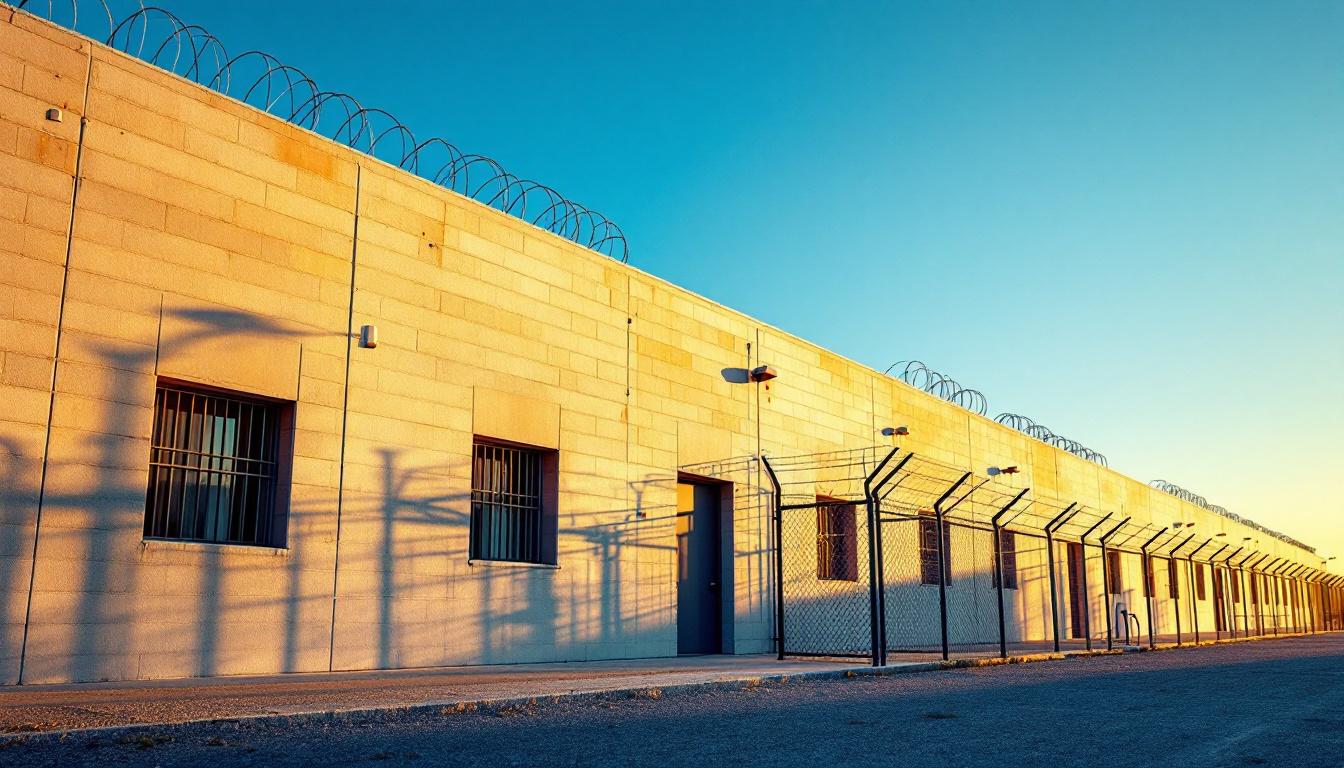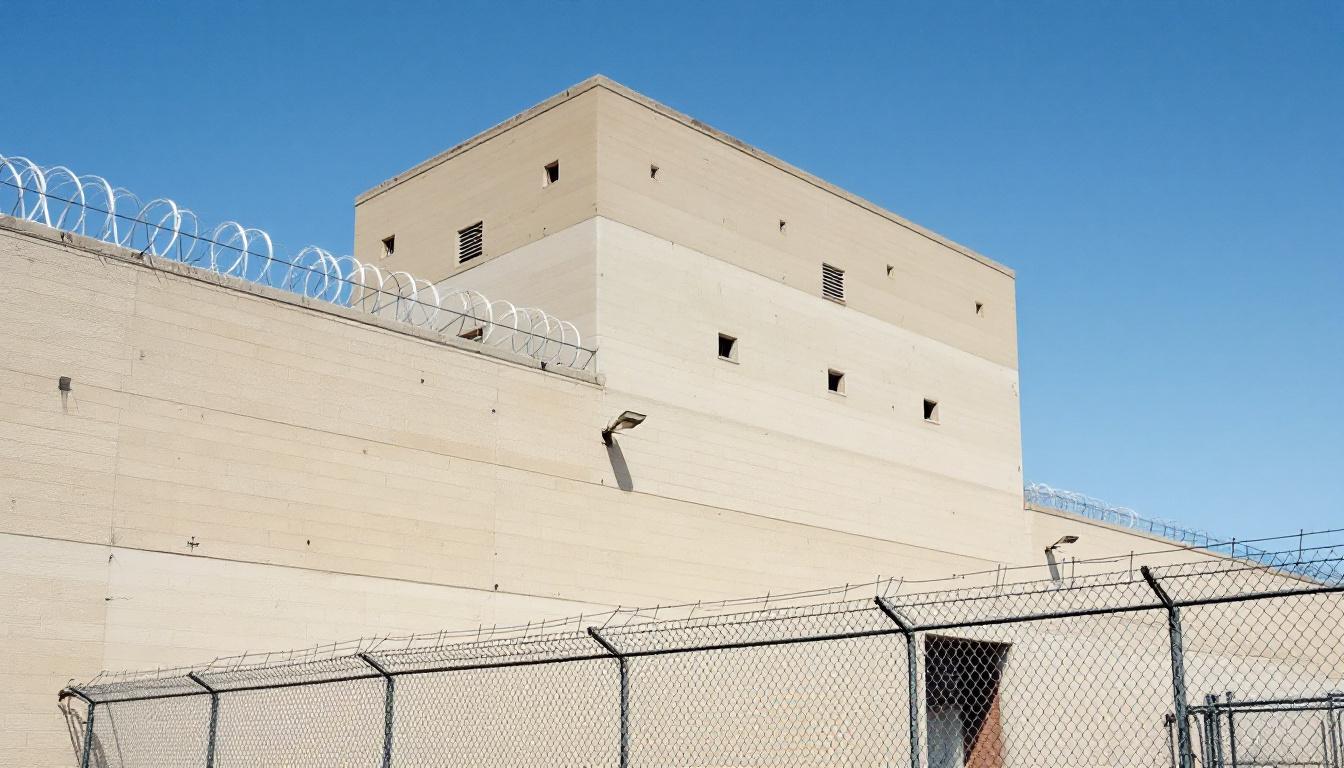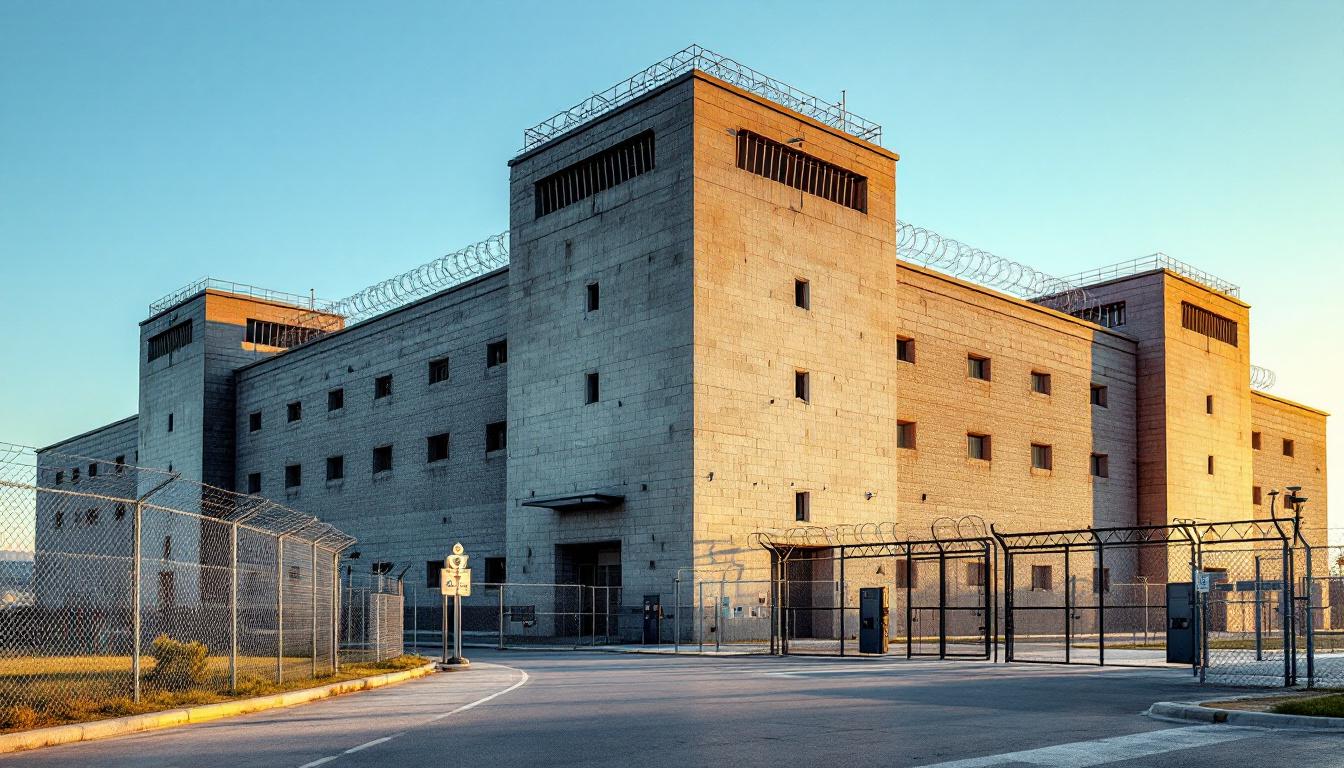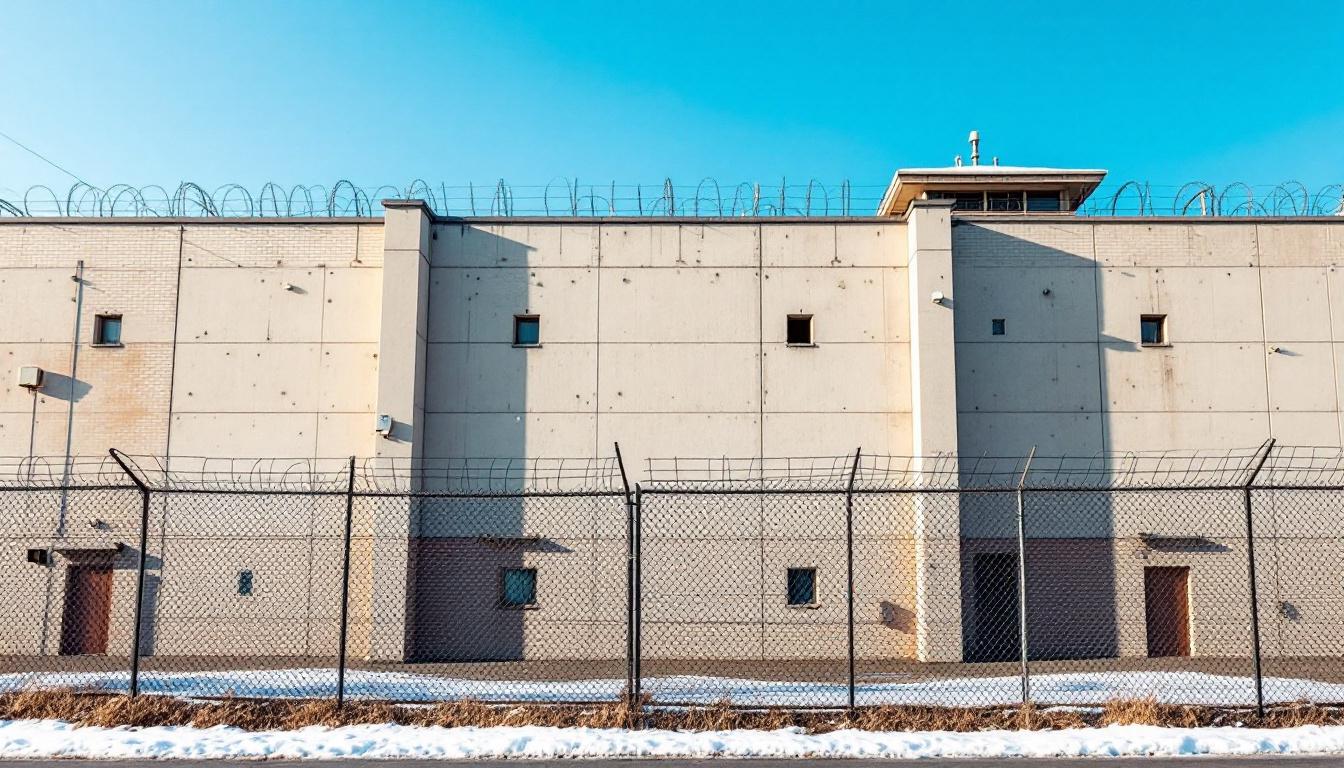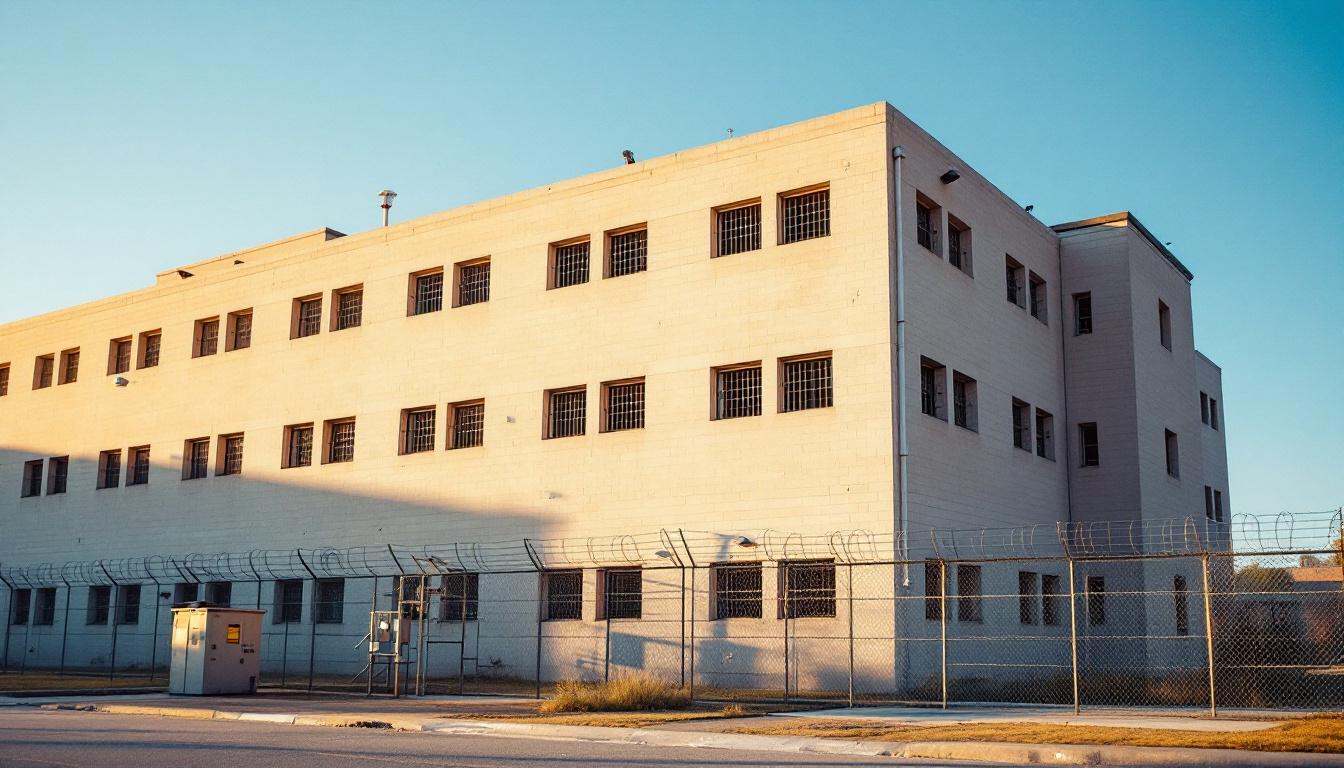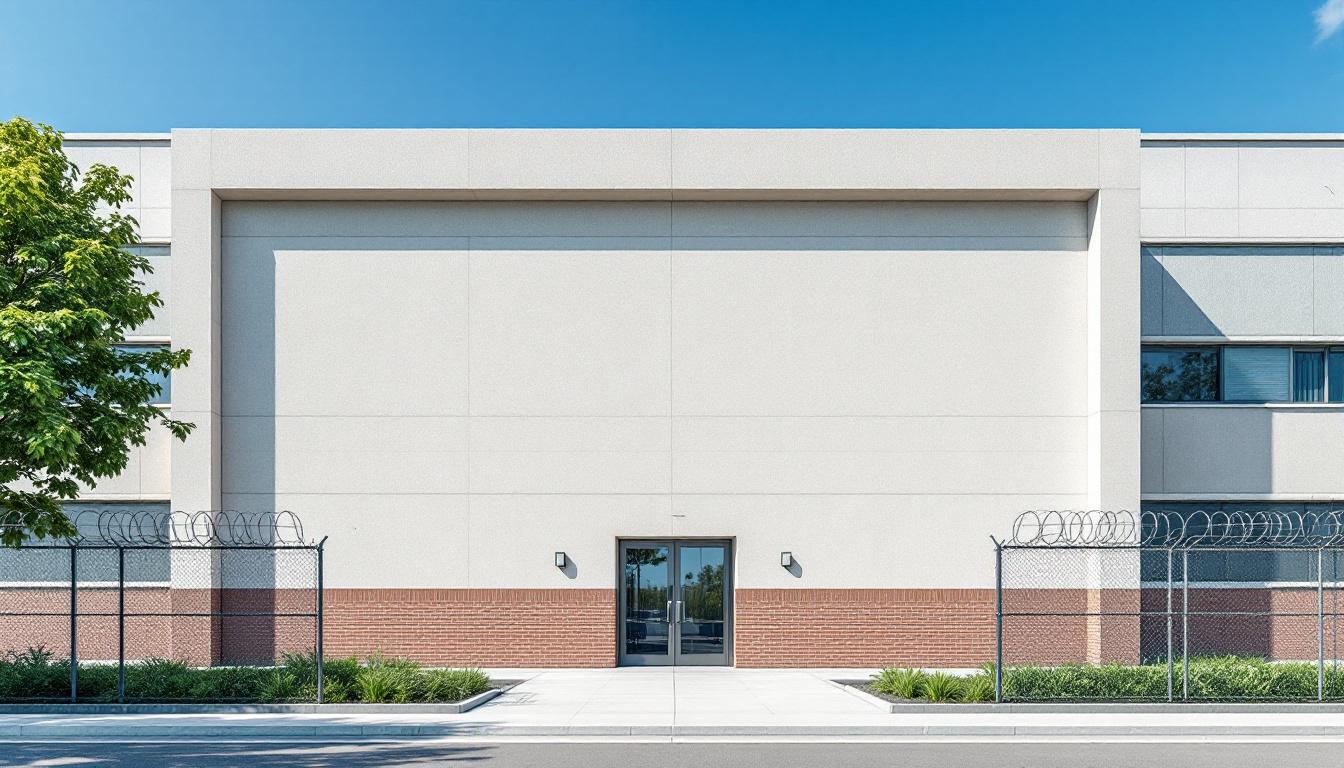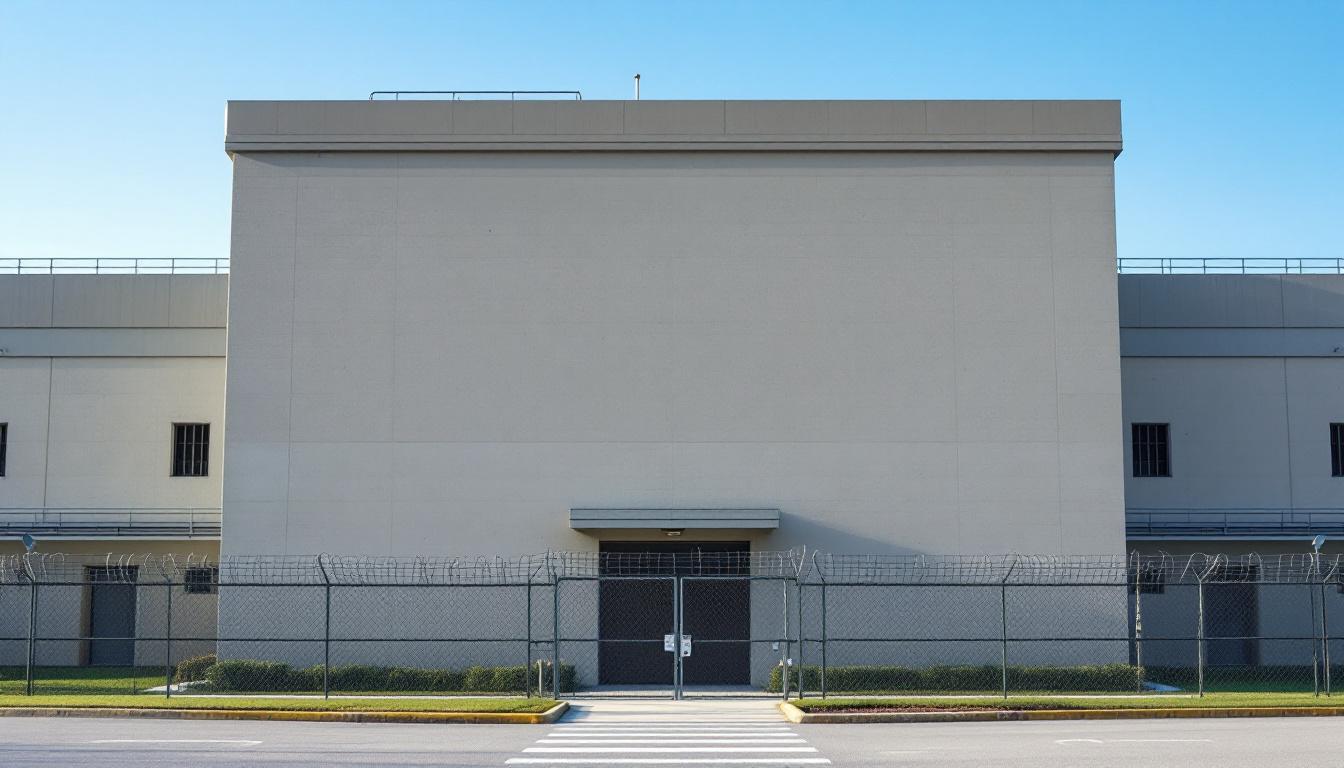
Quick Navigation
How to contact an inmate at Georgia State Prison
This comprehensive guide will walk you through how to connect with an inmate at Georgia State Prison. Follow the steps below to find an inmate and send letters and photos:
- Search for the inmate using our search tool below
- Create your account or log in to Penmate
- Write your message (up to 6,000 characters)
- Send instantly - inmates receive printed copies daily
Find an Inmate
Search for an inmate to start communicating today
Tip: You can search by first name, last name, or inmate ID number
To contact a person at Georgia State Prison start by searching for the person on the official facility website. Perform a search by following these steps:
- Step 1: Enter their first name and last name into the search form and click "Search"
- Step 2: Locate their inmate record
- Step 3: Write down their Inmate ID and any housing information provided
Important! Be sure to enter the person's full name. Nicknames should not be used.
How to Send Messages to Inmates

You can use your phone or computer to send emails, letters, and photos to an inmate. Messages are sent electronically to inmate tablets or kiosks at the facility. If you would like to send a message, start by searching for an inmate at Georgia State Prison.
Sending Photos and Postcards

A great way to send love and support to a loved one at Georgia State Prison is to send photos and postcards. It only takes a few minutes to send photos from your phone and it makes a huge difference. You can also mail postcards with words of support and inspiration, or design your own postcard for special moments like birthdays and holidays.
Important! Be sure not to send any explicit photos or they may not be approved by the facility. You can also use a photo printing app like Penmate to make sure your photos are printed at the correct size (4x6 or 3x5) and are mailed according to the rules and regulations of Georgia State Prison.
Frequently asked questions about Georgia State Prison
-
How long does it take to deliver a message?
If you're sending an email message your letter is usually delivered within 24-48 hours. For messages sent via mail you should expect delivery within 3-7 days. All messages will need be approved by Georgia State Prison.
-
How much does it cost to send a message to Georgia State Prison?
You can send a message free using your phone or mail a message via USPS for the price of a $0.60 stamp and envelope. You can also purchase credits or e-stamps from services starting at $1.99.
-
What services can I use to contact an inmate at Georgia State Prison?
Penmate
You can use Penmate to send letters and photos to an inmate from your phone. It's an easy way to stay in touch during your loved one's incarceration. Use the inmate locator to find an inmate's location and contact information, then you can send messages within a few minutes.
Securus messaging
Securus may be another option for communicating with an inmate at Georgia State Prison. You can create a friends and family account and purchase credits to send messages. All messages will be reviewed and must be approved by the facility.
JPay
Some county jails and state prisons may support sending messages with JPay. You must register an account with the system, find your loved one, and purchase stamps to send messages. For some locations you can also attach photos.
Smart Jail Mail
You may also check if Smart Jail Mail is available at Georgia State Prison. Smart Jail Mail is operated by Smart Communications and has contracted with some state and county jails. After purchasing credits, your messages and photos are sent to the facility, printed out, and then handed out to your loved one.
-
What is the mailing address of Georgia State Prison?
Mailing address:
Georgia State Prison
300 1st Ave S
Reidsville, GA 30453
Phone: (912) 557-7301Business hours:
- Monday: Closed
- Tuesday: Closed
- Wednesday: Closed
- Thursday: Closed
- Friday: Closed
- Saturday: 9:00 AM – 3:00 PM
- Sunday: 9:00 AM – 3:00 PM
-
What are the visiting hours at Georgia State Prison?
Visiting hours at Georgia State Prison vary by housing unit and security level. Generally, visits are scheduled on weekends and holidays, with some facilities offering weekday visits. Contact the facility directly at (912) 557-7301 or check their website for the current visiting schedule. Visits typically last 30-60 minutes and must be scheduled in advance.
-
What items are prohibited when sending mail to Georgia State Prison?
Prohibited items typically include: cash, personal checks, stamps, stickers, glitter, glue, tape, staples, paperclips, polaroid photos, musical or blank greeting cards, hardcover books, magazines with staples, and any items containing metal or electronics. Only send letters on plain white paper with blue or black ink. Photos must be printed on regular photo paper (no Polaroids). Always check with Georgia State Prison for their specific mail policies.
-
How do I send money to an inmate at Georgia State Prison?
You can send money to an inmate at Georgia State Prison through several methods: 1) Online using JPay, Access Corrections, or the facility's approved vendor, 2) Money orders mailed directly to the facility with the inmate's name and ID number, 3) Kiosks located in the facility lobby, or 4) Over the phone using a credit or debit card. Fees vary by method, typically ranging from $2.95 to $11.95 per transaction.
-
Can I schedule a video visit with an inmate at Georgia State Prison?
Many facilities now offer video visitation as an alternative to in-person visits. At Georgia State Prison, video visits may be available through services like Penmate, Securus Video Connect, GTL, or ICSolutions. Video visits typically cost $10-20 for 20-30 minutes and must be scheduled in advance. You'll need a computer or smartphone with a camera and reliable internet connection. Contact the facility for their specific video visitation policies and approved vendors.
-
What identification do I need to visit an inmate at Georgia State Prison?
All visitors must present valid government-issued photo identification such as a driver's license, state ID, passport, or military ID. Minors must be accompanied by a parent or legal guardian who can provide the minor's birth certificate. Some facilities require visitors to be on the inmate's approved visitation list, which may require a background check. Contact Georgia State Prison for specific ID requirements and visitor approval procedures.
-
How can I find out an inmate's release date?
To find an inmate's release date at Georgia State Prison, you can: 1) Use the online inmate search tool if available, 2) Call the facility's records department, 3) Contact the inmate's case manager or counselor, or 4) Have the inmate provide this information during a call or visit. For privacy reasons, some facilities only release this information to immediate family members.
Facility Overview
Official Website

About Georgia State Prison
Overview of Georgia State Prison
Serving as Georgia’s primary maximum security correctional facility until its closure in February 2022, Georgia State Prison operated with a comprehensive mission to house the state’s most dangerous offenders while maintaining rigorous security protocols. The facility, which was based in unincorporated Tattnall County outside of Reidsville, accommodated approximately many individuals across all security levels, from trusty to high-maximum classifications.
Originally designed by Tucker and Howell and opened in 1937, the facility evolved significantly over its decades of operation to meet the growing demands of the state’s correctional system. The prison’s modern classic architecture was enhanced by a Julian Harris sculpture featuring a frieze entitled “Rehabilitation,” symbolizing various trades and occupations. Following a major remodel in 1979, the complex expanded to include nine buildings containing four two-tiered cellblocks with single cells, organized into specialized units including general population, special management units, mental health/mental retardation units, and a 26-bed surgical facility.
The facility maintained extensive security infrastructure and specialized programs designed to manage high-risk populations effectively. Georgia State Prison housed a Special Management Unit (SMU), a Correctional Emergency Response Team (C.E.R.T.), two Tactical Squads, a Canine Unit, and an on-site Fire Station where specially assigned offenders resided separately from the main compound. The prison achieved notable recognition as the established U.S. correctional facility to receive accreditation from both the American Medical Association and the American Correctional Association, reflecting its commitment to maintaining professional standards in corrections and healthcare delivery.
Programs & Services
Important Note: Georgia State Prison was permanently closed by the Georgia Department of Corrections on February 19, 2022. The following information reflects the services and programs that were available during the facility’s operation.
The counseling programs at Georgia State Prison were designed to rival many facilities across the country, with a primary focus on reducing recidivism rates among the incarcerated population. These comprehensive rehabilitation efforts addressed the complex needs of individuals housed across all security levels, from trusty to maximum security classifications. The facility’s approach to programming recognized that effective reentry preparation required addressing both the underlying factors that contributed to criminal behavior and providing practical skills for successful community reintegration.
During its operation, the prison typically offered educational services that may have included adult basic education, GED preparation, and literacy programs to help individuals develop fundamental academic skills. Vocational training opportunities were often available to provide job-ready skills in various trades, while substance abuse treatment programs addressed addiction issues that frequently contributed to criminal behavior. The facility’s Fire Team program provided specialized training and work opportunities, with participants residing at the dedicated fire station away from the main compound. Mental health and medical services were particularly notable, as Georgia State Prison achieved the distinction of being accredited by both the American Medical Association and the American Correctional Association.
The prison’s comprehensive approach to rehabilitation often included religious services, recreational activities, and family visitation programs that helped maintain important community connections. Library services and legal research assistance were typically available to support both educational pursuits and legal needs. Given the facility’s maximum security designation and diverse population needs, specialized programming may have been offered for different security classifications and individual risk assessments, all aimed at preparing individuals for eventual successful reintegration into their communities.
Daily Life & Visitation
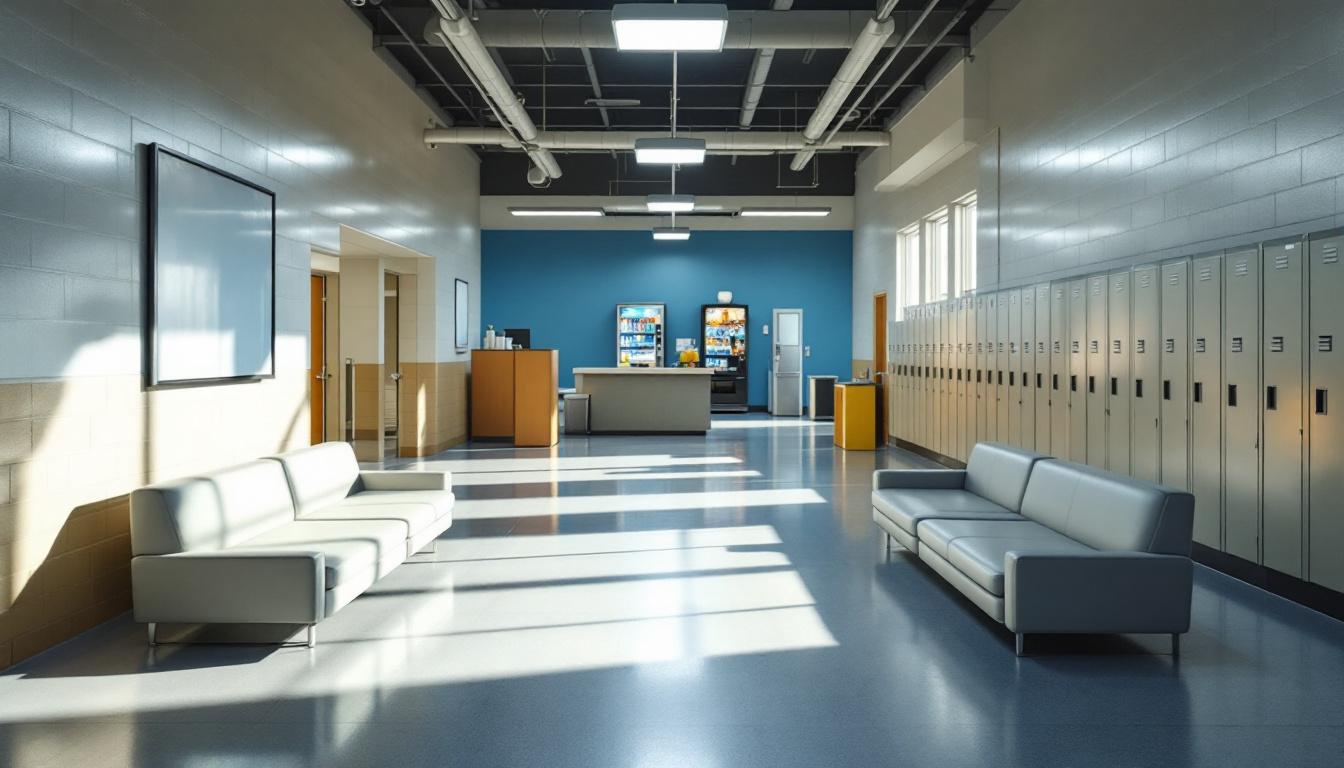
Note: Georgia State Prison was permanently closed by the Georgia Department of Corrections on February 19, 2022. The following information describes daily life as it existed when the facility was operational.
Within the nine buildings that comprised Georgia State Prison’s complex, inmates typically began each day with structured count times and meal service in designated areas. The facility’s design, featuring four two-tiered cellblocks with single cells, meant that daily routines often revolved around the movement between these housing units and common areas. Inmates assigned to different security levels - from trusty to maximum security - experienced varying degrees of freedom in their daily schedules, with those in the Special Management Unit (SMU) having the most restricted movement patterns.
The prison’s counseling programs, which were considered among the most comprehensive in the country, likely formed a significant part of many inmates’ daily routines as part of rehabilitation efforts aimed at reducing recidivism. Inmates may have participated in various educational or vocational programs throughout the week, while those assigned to special roles, such as the Fire Team members who resided at the separate fire station away from the main compound, would have had distinctly different daily schedules focused on emergency response training and duties.
Family connections were maintained through the facility’s visitation programs, though specific policies would have varied based on an inmate’s security classification and housing assignment within the different units. The medical and mental health services, housed in the facility’s 26-bed surgical unit and specialized MH/MR units, provided daily healthcare routines for inmates requiring medical attention or ongoing treatment, reflecting the prison’s accreditation standards from both the American Medical Association and American Correctional Association.
Ready to Connect?
Start communicating with your loved one today
Search for an Inmate

